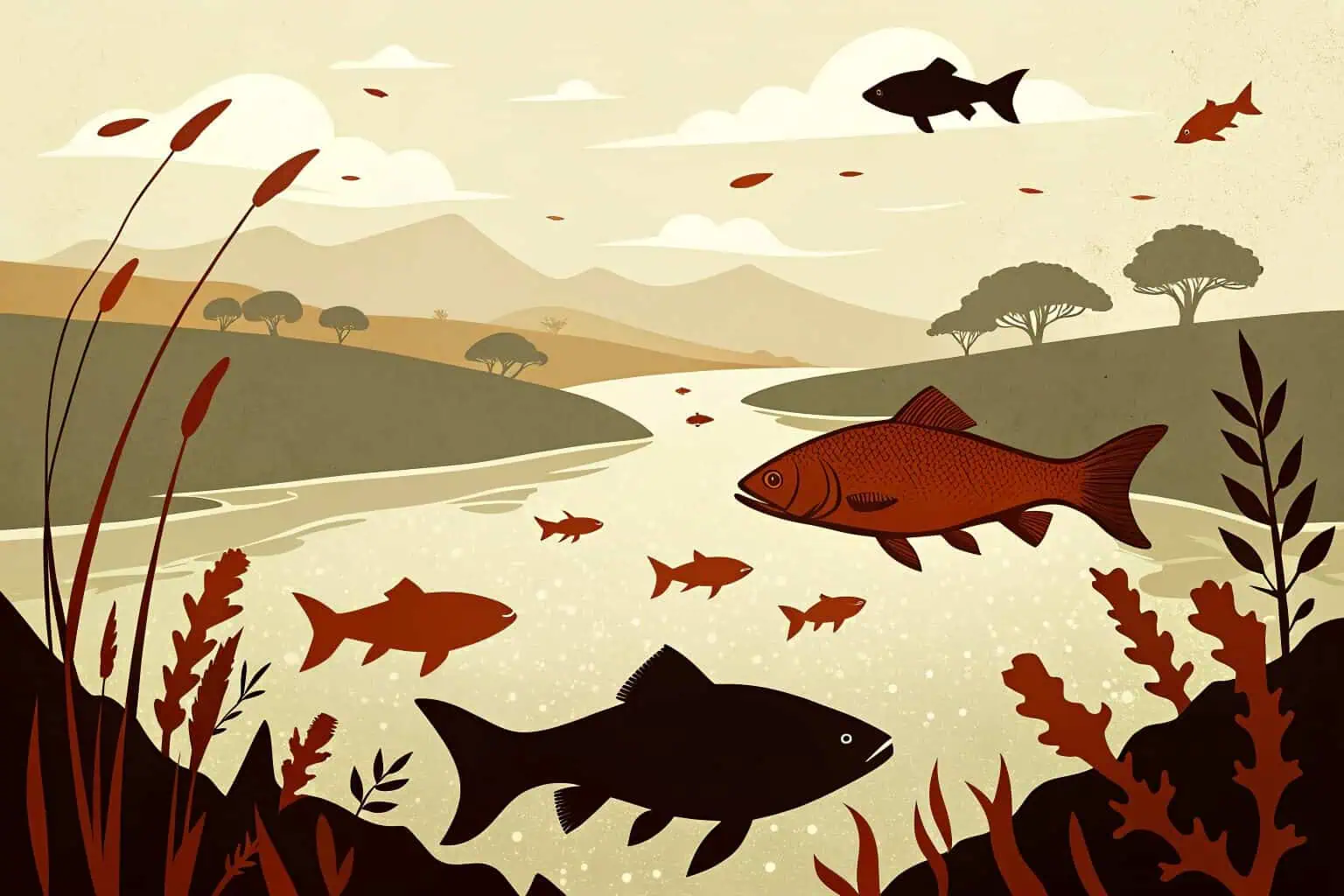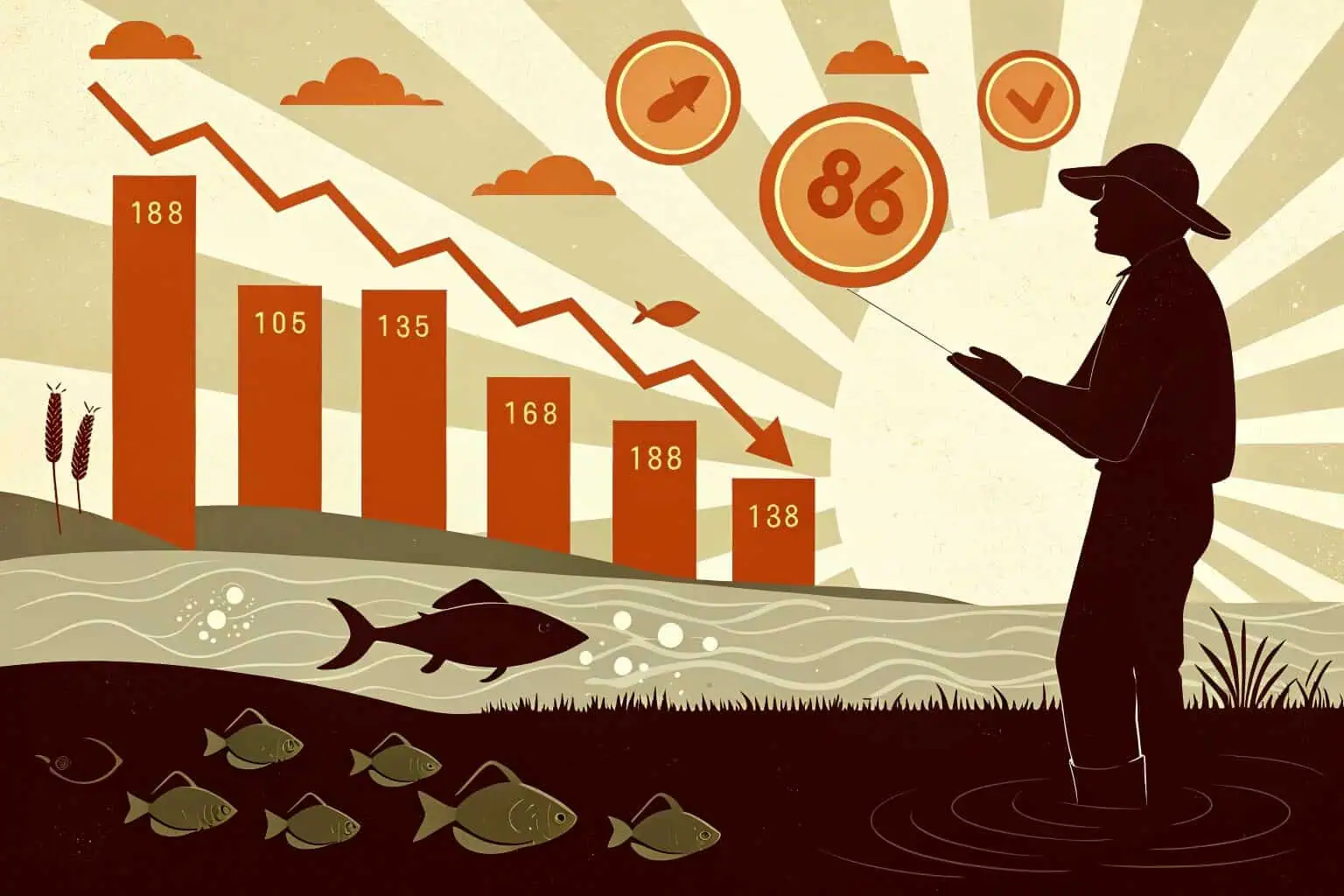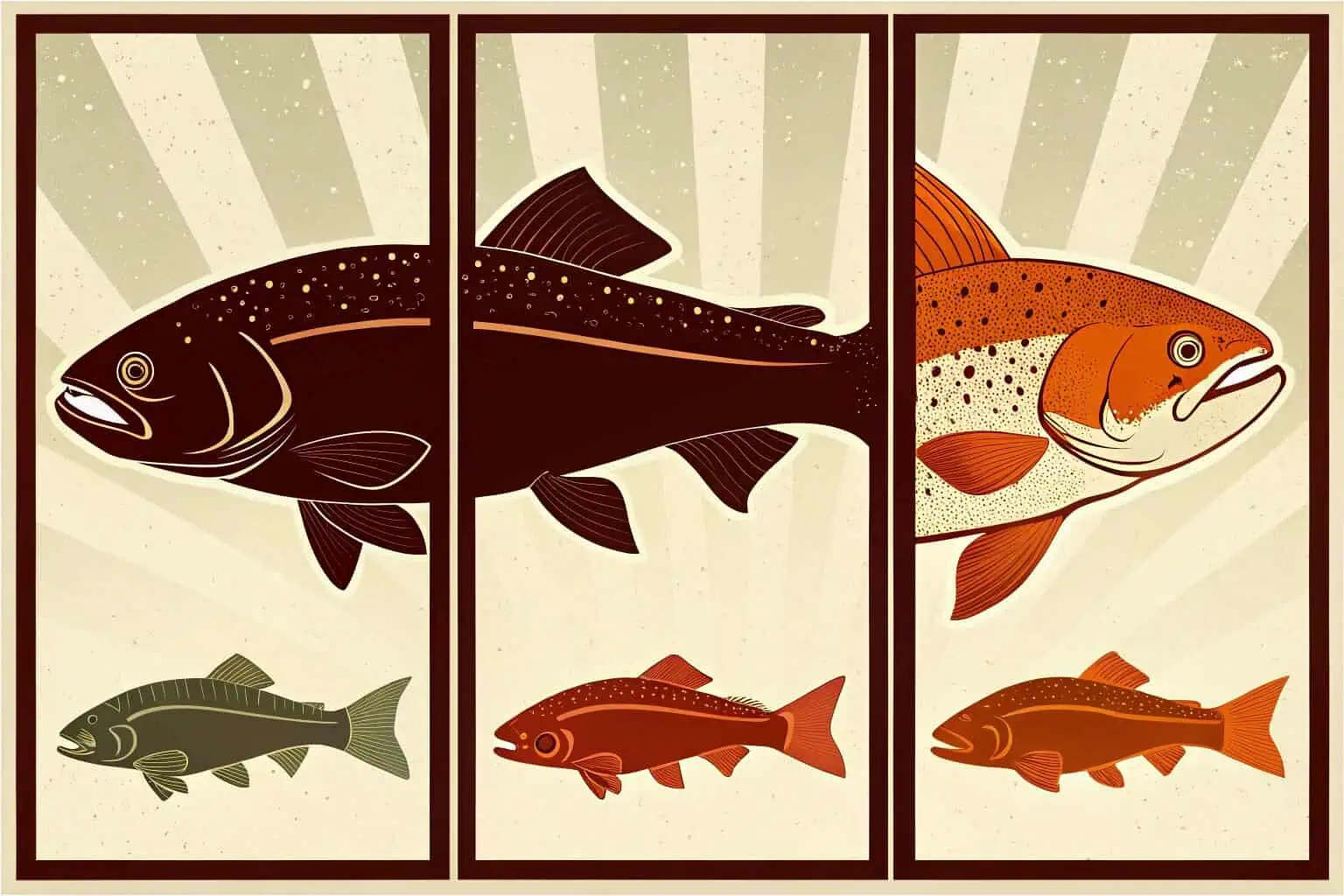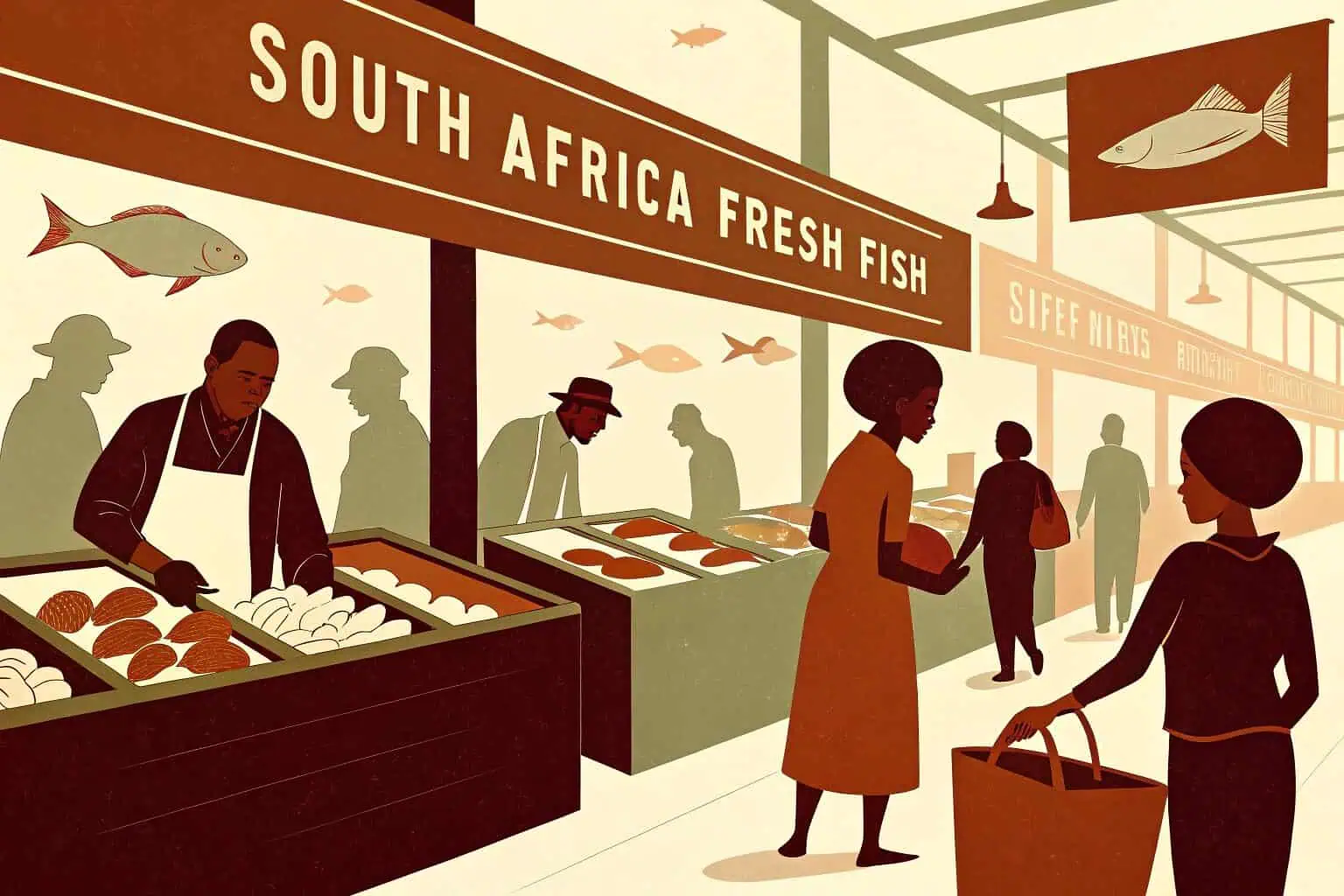Which Fish is Best for Farming in South Africa?
What is the most profitable fish to farm in South Africa? It's a common question as the aquaculture industry grows.
The best fish for farming in South Africa often include Tilapia, Catfish, and Trout, depending on your specific goals, resources, and local market demand. Each has unique benefits and challenges.

Choosing the right fish is a big step. It can feel a bit overwhelming with so many options. But don't worry, I'm here to share what I've learned to help you make a good choice. Let's look at some popular options and what makes them suitable for farming here.
Which Fish Farming is Profitable in South Africa?
Thinking about profit in fish farming? It's key to success, and many factors play a role in South Africa.
Profitable fish farming in South Africa often involves species like Tilapia and Catfish due to their fast growth, market demand, and adaptability. Trout can also be profitable in specific, cooler regions.

When I first looked into fish farming1, profitability was my main concern. I quickly realized that it's not just about the fish, but also about managing costs and understanding the market. From my experience, several factors determine how profitable your venture will be. These include the species you choose, your farming system, feed costs, water availability, and market access. For instance, while some high-value fish might seem attractive, their specialized needs can increase operational costs. On the other hand, species that are easier to manage and have a steady demand can offer more consistent returns. I've seen that a well-planned operation focusing on efficient production and strong market links tends to do best. It's also important to consider government support and new technologies, as these can significantly impact your bottom line. For example, using efficient water systems like those Bancy provides for water storage can help manage a crucial resource and reduce costs, which is something I always keep in mind.
Key Profit Drivers
What really makes a fish farm profitable? I've found it boils down to a few core things:
- Species Selection: Choosing a fish that grows fast, resists disease, and is liked by consumers is number one. Tilapia is a great example here.
- Feed Management2: Feed is often the biggest cost. Using good quality feed efficiently is vital. I always look for ways to optimize feeding schedules.
- Market Access3: Having a reliable market to sell your fish at a good price is crucial. Building relationships with buyers helps a lot.
Common Challenges to Profitability
It's not all smooth sailing. I've faced challenges too:
- High Input Costs4: Besides feed, things like energy and labor can add up.
- Water Scarcity5: South Africa can be dry. Managing water well is a big challenge, but also an opportunity for smart solutions.
- Disease Outbreaks6: Keeping fish healthy is a constant task. Good biosecurity is a must.
Here's a simple table I put together based on my observations:
| Factor | High Profit Potential | Moderate Profit Potential | Lower Profit Potential |
|---|---|---|---|
| Species | Tilapia, Catfish | Trout (niche) | Ornamental (variable) |
| Market Demand7 | High & Consistent | Niche or Seasonal | Fluctuating |
| Input Costs8 | Low to Moderate | Moderate to High | High |
| Management | Simpler | Moderate Complexity | Complex |
What is the Most Profitable Type of Fish Farming?
Is there one single "most profitable" type? It's a bit more complex than a simple answer, as local conditions matter a lot.
The most profitable type of fish farming often combines fast-growing, high-demand species like Tilapia or Catfish with efficient, low-cost production systems. Intensive systems can yield more but require higher investment.

I've explored various farming systems, from simple ponds to more advanced setups. What I've learned is that "most profitable" isn't a one-size-fits-all answer. It really depends on your investment capacity, technical skills, and the specific market you're targeting. For example, intensive recirculating aquaculture systems (RAS) can produce a lot of fish in a small space, which sounds very profitable. However, they also need a big upfront investment and skilled operators. On the other hand, extensive or semi-intensive pond farming9 might have lower yields per area but also much lower setup and running costs, making them more accessible for many. I've seen successful farms using both approaches. The key is matching the system to the species and your resources. For instance, Tilapia can thrive in simpler pond systems, making them a good choice for lower-cost, profitable farming. Catfish are also very adaptable. My advice is to carefully research and plan based on your own situation rather than just chasing what seems most profitable on paper. Remember, consistent production and a good market are just as important as the farming method itself.
Comparing Farming Systems
Let's look at a few common systems I've encountered:
- Pond Culture: This is common for Tilapia and Catfish. It's relatively low cost to set up but might have lower yields compared to intensive systems.
- Recirculating Aquaculture Systems (RAS)10: These are high-tech, allowing for high-density farming and water conservation. Great for Trout or high-value species, but expensive and complex.
- Cage Culture: Farming fish in cages in existing water bodies. Can be cost-effective if you have access to suitable water, but environmental impact needs careful management.
Factors Beyond the System
Profitability isn't just about the tanks or ponds. I always consider:
- Scale of Operation: Larger farms can often achieve economies of scale, reducing per-unit costs.
- Value Addition: Processing your fish (e.g., filleting, smoking) can add significant value and open up new markets.
- Risk Management11: Having plans for things like disease or power outages is essential for protecting your profits.
Here's how I see the profitability potential of different systems for common species:
| System Type | Species Suitability | Initial Investment | Operating Costs | Profit Potential (if well-managed)12 |
|---|---|---|---|---|
| Extensive Ponds | Tilapia, Catfish | Low | Low | Moderate |
| Semi-Intensive Ponds | Tilapia, Catfish | Moderate | Moderate | Good |
| Intensive RAS | Trout, Tilapia | High | High | High (but higher risk) |
| Cage Culture | Tilapia, Trout | Moderate | Moderate | Good (site-dependent) |
Which Farmed Fish is Best?
Wondering which farmed fish truly stands out? The "best" depends on what you're looking for – taste, ease of farming, or market value.
The "best" farmed fish depends on criteria: Tilapia is easy to farm and affordable, Trout offers premium quality for cooler climates, and Catfish is hardy with good market acceptance.

When people ask me, "Which farmed fish is best?" I usually respond with, "Best for what purpose?" If you're a consumer looking for an affordable, versatile protein, Tilapia is often a great choice. It has a mild flavor and cooks quickly. If you're after a richer taste and a fish that's often associated with fine dining, then Trout13 might be your pick, especially if it's locally farmed in cool, clean waters. From a farmer's perspective, the "best" fish is one that grows well in their specific environment, is resilient to diseases, has readily available and affordable feed, and fetches a good price in the market. I've found that Tilapia scores highly on many of these points for South African conditions, especially in warmer areas. Catfish is another strong contender due to its hardiness and ability to tolerate varied water conditions. Trout, while excellent, requires cooler water, limiting where it can be farmed effectively without significant investment in water chilling. So, the "best" is really a balance of these factors, and it often comes down to matching the fish to the local environment and market opportunities. I always advise new farmers to research thoroughly before committing to a particular species.
Tilapia: The Hardy All-Rounder
I've seen Tilapia become incredibly popular for good reasons:
- Fast Growth14: They reach market size relatively quickly.
- Adaptability15: They can tolerate a range of water conditions and are quite hardy.
- Diet: They can consume a varied diet, which can help manage feed costs.
- Market: There's a consistent demand for Tilapia.
Catfish: The Resilient Choice
Catfish, especially the African Sharptooth Catfish, is another one I often recommend:
- Hardiness: Extremely resilient and can tolerate low oxygen levels.
- Growth Rate16: Good growth, especially in warmer waters.
- Market Demand: Well-accepted in many parts of South Africa.
Trout: The Premium Option
Trout farming is more specialized but can be very rewarding:
- High Value: Commands a premium price in the market.
- Taste & Quality: Highly regarded for its flavor and texture.
- Challenges: Requires cold, clean water, making site selection critical. Feed costs can also be higher.
Here's a quick comparison I find useful:
| Feature | Tilapia | Catfish (African Sharptooth) | Trout (Rainbow) |
|---|---|---|---|
| Growth Rate | Fast | Fast | Moderate to Fast |
| Hardiness | High | Very High | Moderate |
| Water Temp. | Warm (20-30°C) | Warm (25-30°C) | Cold (10-18°C) |
| Feed Cost | Moderate | Moderate | High |
| Market Value17 | Moderate | Moderate | High |
| Farming Ease | Relatively Easy | Easy | More Demanding |
What Fish are in Demand in South Africa?
Knowing what fish people want to buy is crucial. Is there a strong demand for farmed fish in South Africa?
Popular fish in demand in South Africa include Hake (mostly wild-caught), Tilapia, Trout, and Catfish (increasingly from aquaculture). Consumer preferences and affordability drive demand.

From my interactions with consumers and market vendors, it's clear that South Africans enjoy a variety of fish. While traditionally, marine species like Hake have been very popular, the demand for sustainably farmed freshwater fish18 is definitely on the rise. I've noticed a growing awareness about where food comes from, and this is boosting the appeal of locally farmed fish. Tilapia is a big one; its affordability and mild taste make it accessible to a wide range of consumers. I see it in supermarkets and local markets quite often. Trout also has a strong following, especially among those looking for a higher-quality product, often found in restaurants and delis. Catfish is gaining traction too, particularly in certain regions and communities where it's a traditional favorite. The key drivers for demand, as I see them, are price, taste, availability, and increasingly, sustainability. As wild fish stocks face pressure, aquaculture is stepping in to fill the gap. This means that as a farmer, if you can produce a good quality fish at a competitive price, there's a ready market waiting. I believe the demand for farmed fish will only continue to grow as the population increases and people seek healthy protein sources.
Top Demanded Farmed Species
Based on what I see in the market:
- Tilapia: Consistently high demand due to its affordability and versatility.
- Trout: Strong demand in niche and higher-end markets. Its appeal is often linked to quality and taste.
- Catfish: Growing demand, particularly for the African Sharptooth Catfish, known for its resilience and good meat yield.
Factors Influencing Demand
Several things shape what fish people buy:
- Price: Affordability is a major factor for many South African consumers.
- Consumer Preferences: Taste, texture, and familiarity play a big role. Some prefer mild fish, others stronger flavors.
- Availability & Accessibility: If fish is easy to find in local shops and markets, demand tends to be higher.
- Health & Nutrition19: Growing awareness of the health benefits of eating fish also boosts demand.
Here's a snapshot of demand characteristics:
| Fish Species | Primary Consumer Base | Price Point | Key Selling Points |
|---|---|---|---|
| Tilapia | Broad (mass market) | Affordable | Mild taste, versatile, good value |
| Trout | Mid to high-income, food service | Premium | Excellent flavor, quality, often local |
| Catfish | Regional preferences, growing | Moderate | Hardy, good meat, traditional appeal20 |
| Hake | Broad (traditional staple) | Moderate | Familiar, versatile (mostly wild) |
Conclusion
Choosing the right fish, understanding profitability, and meeting market demand are key to successful fish farming in South Africa. With careful planning, your aquaculture venture can thrive.
-
Explore this link to discover essential strategies and insights that can enhance your fish farming profitability. ↩
-
Learn effective strategies for feed management to reduce costs and improve fish growth in your aquaculture operations. ↩
-
Discover essential strategies for securing market access and building buyer relationships to maximize your fish sales. ↩
-
Understanding the implications of high input costs can help farmers strategize better and improve profitability. ↩
-
Exploring innovative solutions for water scarcity can lead to sustainable practices and improved crop yields. ↩
-
Learning about biosecurity measures can help aquaculture businesses maintain fish health and reduce losses. ↩
-
Exploring this topic will provide insights into aligning your production with market needs for better returns. ↩
-
This information is crucial for budgeting and financial planning in aquaculture operations. ↩
-
Learn about the benefits of extensive or semi-intensive pond farming, which may offer lower costs and easier management. ↩
-
Explore this link to understand the advanced technology and sustainability aspects of RAS, crucial for modern aquaculture. ↩
-
Learning about risk management can safeguard your fish farming business against unforeseen challenges and losses. ↩
-
Exploring strategies to enhance profit potential can lead to better management and increased revenue in aquaculture. ↩
-
Discover why Trout is favored in fine dining and its unique flavor profile, especially when locally sourced. ↩
-
Understanding the advantages of fast growth can help optimize your Tilapia farming strategy and increase profitability. ↩
-
Exploring adaptability in Tilapia can provide insights into improving farming practices and resilience against environmental changes. ↩
-
Exploring growth rate factors can enhance cultivation strategies for aquatic plants. ↩
-
Knowing the market value aids in making informed decisions for profitable fish farming. ↩
-
Explore the advantages of sustainably farmed freshwater fish, including environmental impact and health benefits, to make informed choices. ↩
-
Exploring the health benefits of fish can encourage healthier eating habits and increase demand for fish products. ↩
-
Learn about catfish's hardiness and traditional appeal, which contribute to its popularity in various regional dishes. ↩